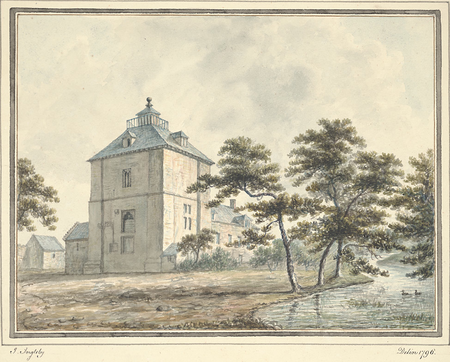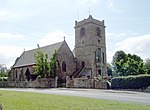Wattlesborough Castle
Castles in ShropshireGrade I listed buildings in ShropshireScheduled monuments in ShropshireStructures on the Heritage at Risk register

Wattlesborough Tower is a ruined fortified 13th-century manor house or Tower House in Shropshire. It is situated close to the boundary with Powys in Wales. Wattlesborough is a former township within the present parish of Alberbury. The castle is a Grade 1 listed scheduled monument. The Tower comprises a square two-storey tower above an undercroft surrounded by a moated enclosure with a fishpond. The Leighton family inherited Wattlesborough in 1471 and used it as their chief residence until circa 1711. At that time an adjoining farm building was constructed and named Wattlesborough Hall.
Excerpt from the Wikipedia article Wattlesborough Castle (License: CC BY-SA 3.0, Authors, Images).Wattlesborough Castle
Geographical coordinates (GPS) Address Nearby Places Show on map
Geographical coordinates (GPS)
| Latitude | Longitude |
|---|---|
| N 52.7074 ° | E -2.956 ° |
Address
Warwick Farm
SY5 9EF , Alberbury with Cardeston
England, United Kingdom
Open on Google Maps










